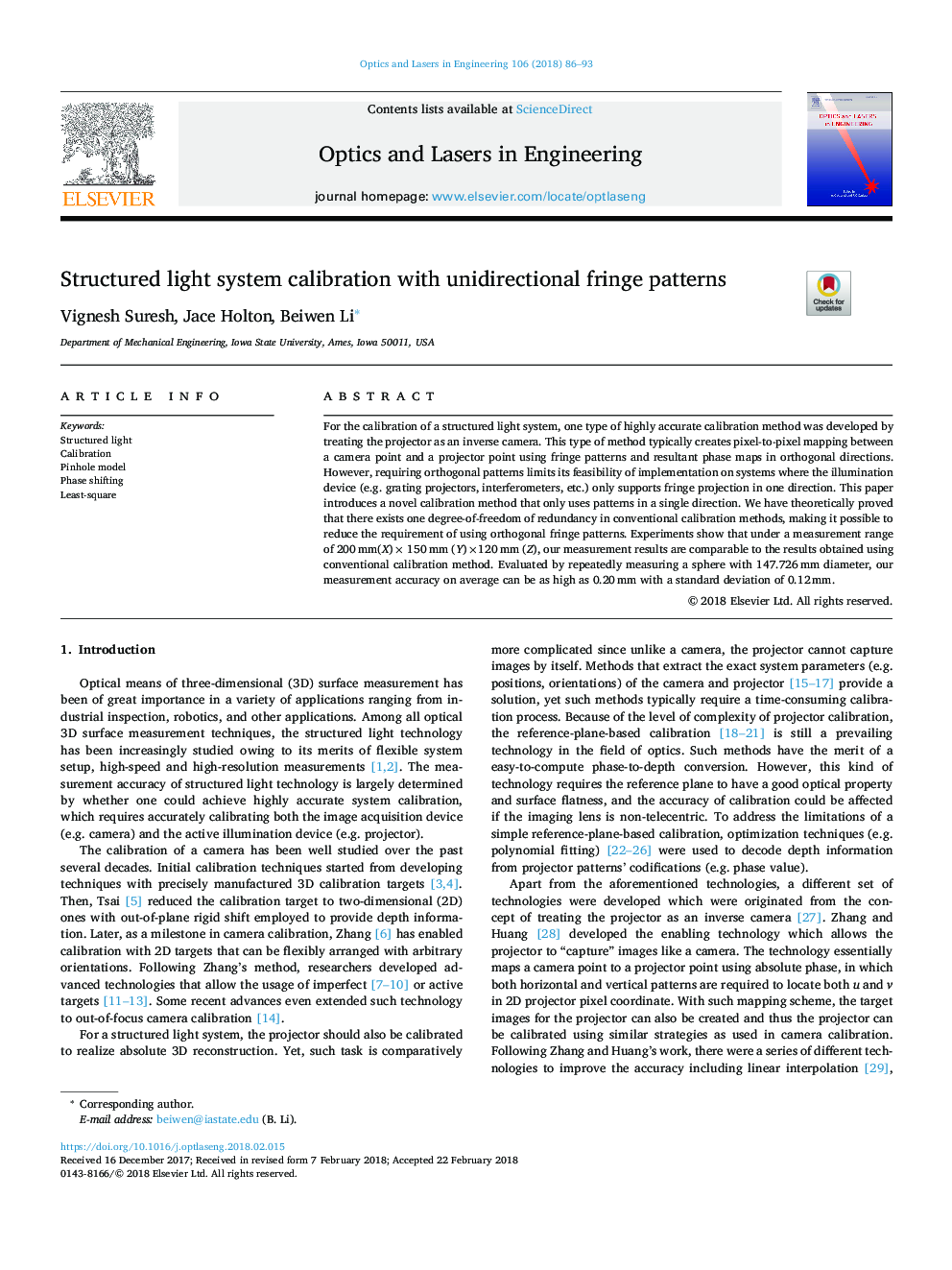| Article ID | Journal | Published Year | Pages | File Type |
|---|---|---|---|---|
| 7131620 | Optics and Lasers in Engineering | 2018 | 8 Pages |
Abstract
For the calibration of a structured light system, one type of highly accurate calibration method was developed by treating the projector as an inverse camera. This type of method typically creates pixel-to-pixel mapping between a camera point and a projector point using fringe patterns and resultant phase maps in orthogonal directions. However, requiring orthogonal patterns limits its feasibility of implementation on systems where the illumination device (e.g. grating projectors, interferometers, etc.) only supports fringe projection in one direction. This paper introduces a novel calibration method that only uses patterns in a single direction. We have theoretically proved that there exists one degree-of-freedom of redundancy in conventional calibration methods, making it possible to reduce the requirement of using orthogonal fringe patterns. Experiments show that under a measurement range of 200â¯mm(X)â¯Ã⯠150â¯mm (Y)â¯Ãâ¯120â¯mm (Z), our measurement results are comparable to the results obtained using conventional calibration method. Evaluated by repeatedly measuring a sphere with 147.726â¯mm diameter, our measurement accuracy on average can be as high as 0.20â¯mm with a standard deviation of 0.12â¯mm.
Related Topics
Physical Sciences and Engineering
Engineering
Electrical and Electronic Engineering
Authors
Vignesh Suresh, Jace Holton, Beiwen Li,
